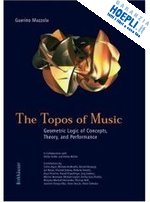

Questo prodotto usufruisce delle SPEDIZIONI GRATIS
selezionando l'opzione Corriere Veloce in fase di ordine.
Pagabile anche con Carta della cultura giovani e del merito, 18App Bonus Cultura e Carta del Docente
The probably most exciting new field of research deals with musical performance and its implementation on advanced object-oriented software environments. This subject not only uses extensively the existing mathematical music theory, it also opens the language to differential equations and tools of differential geometry, such as Lie derivatives. Mathematical performance theory is the key to inverse performance theory, an advanced new research field which deals with the calculation of varieties of parameters which give rise to a determined performance. This field uses techniques of algebraic geometry and statistics, approaches which have already produced significant results in the understanding of highest-ranked human performances.
The book's formal language and models are currently being used by leading researchers in Europe and Northern America and have become afoundation of music software design. This is also testified by the book's nineteen collaborators and the included CD-ROM containing software and music examples.











Il sito utilizza cookie ed altri strumenti di tracciamento che raccolgono informazioni dal dispositivo dell’utente. Oltre ai cookie tecnici ed analitici aggregati, strettamente necessari per il funzionamento di questo sito web, previo consenso dell’utente possono essere installati cookie di profilazione e marketing e cookie dei social media. Cliccando su “Accetto tutti i cookie” saranno attivate tutte le categorie di cookie. Per accettare solo deterninate categorie di cookie, cliccare invece su “Impostazioni cookie”. Chiudendo il banner o continuando a navigare saranno installati solo cookie tecnici. Per maggiori dettagli, consultare la Cookie Policy.